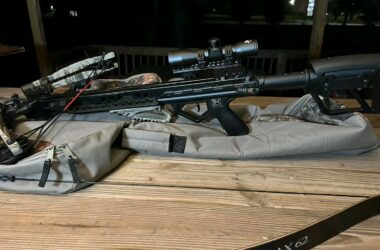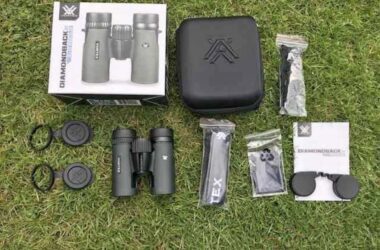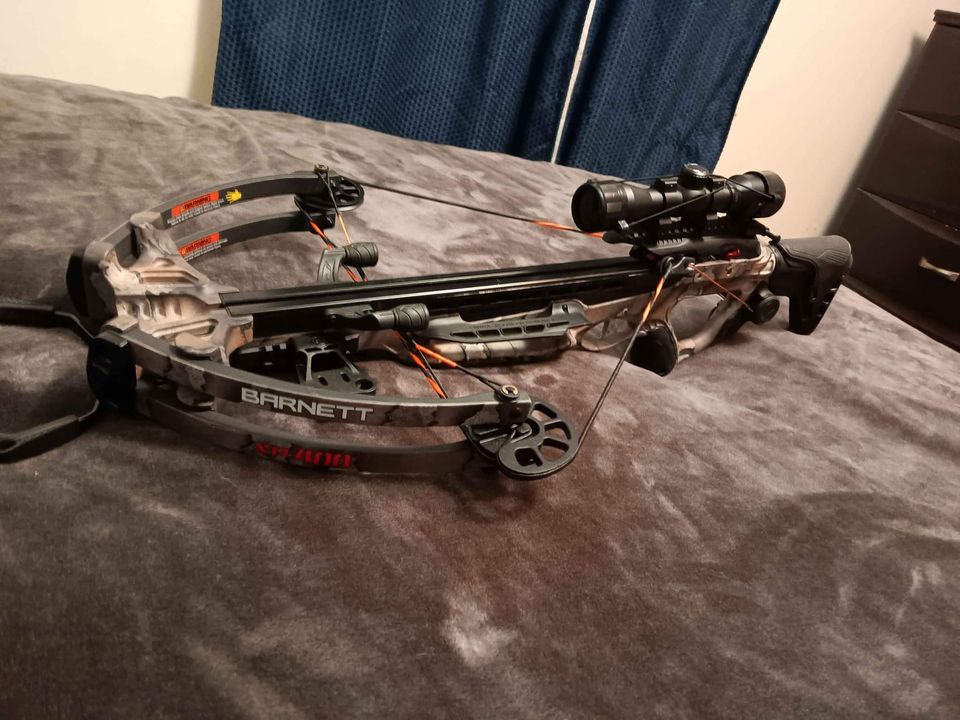How to sight a crossbow is a question asked by many novice archers. How you go about sighting your crossbow will depend on what style of crossbow you have as well as what it is intended for. The following instructions are therefore given as information only and must be adapted to suit your own particular needs.
In belt and claw sighted crossbows, the string usually sits in a groove cut into the stock and so sighting along the top of the stock and finding the correct aiming point is quite easy. Sighting along weapons such as military-style bows or high-powered compound bows with wheels and elevation cams might be slightly more difficult but still not too taxing. For those who need help, there are numerous sights one can buy that fit onto modern bows and crossbows which should be easy to install.
Must Read: Best Crossbows For Under $1000
Supposing you have a traditional longbow or recurve bow, then sighting is going to require a bit more effort on your part. Traditionally these were sighted in by firing an arrow and adjusting the point of aim until it was accurate: this meant several arrows got fired and wasted in the process.
So another method was needed; one that would speed up the sighting process significantly and not eat away at your arrow stock quite so quickly. This involved creating a raised rest for the bow that allowed an arrow to be placed into position with its nock end touching the riser (the handle of the bow).
Next, you used something such as string wax applied to an index card to create a rough surface that would allow you to draw a temporary bowstring on the card. The arrow was then placed just below this line and raised slowly into the ready position until it sat level with the string and there it would stay without touching anything else.
You could now use your fingers to apply pressure to both ends of the arrow and move them up and down until you were happy with where they rested against each other. Finally, you took a fine marker pen and drew a small black dot on each side of the arrow that lined up perfectly with your grooved riser; now all that remained was for you to keep practising until those two dots became one; then you knew your bow was as good as sighted in. A word of warning though: if you have a very heavily recurved bow then you will need to use different points on the arrow to match up with your riser as these points will be closer together or further apart.
There are many variations of types of modern crossbow available today and it might be wise, therefore, to consult the instruction manual before attempting to sight one in at all costs. How you do this depends entirely on what style of sighting system has been employed by the manufacturer; however, there are some basics that remain pretty much the same across most types of crossbows that may well help.
A compound bow can either be broken down into its component parts or left as one whole assembly. If it is left as one whole assembly then locating the exact point where it should be sighted in is going to be all but impossible. Some crossbows allow you to remove the string and bolt from the stock completely whilst others may only allow partial dismantling such as removing just the limbs or allowing access to other parts such as cams or wheels; this will make sighting much easier depending on how far it can be taken apart.
The first step toward sighting a crossbow is preparing the area where your target stands: make sure there are no other hazards nearby and that nothing (including yourself) could get accidentally shot and cause problems.
The next thing you need to do determines whether or not you should partially install arrows for ease of use, if so then go ahead and do this now; if not then skip this step. How you do this depends on your individual bow, but basically you need to place the bolt or arrow into the cocked position which should be as simple as locating some form of cocking and firing mechanism and pulling it back until you feel and hear a click.
How far it needs to go depends on the design of your crossbow: some need to be pulled right back while others can stop just before contact with the bowstring is made which means that they are “half-cocked”.
Must Read: Best Bow Stabilizer
The next thing you are going to have to do is take aim at your target along the crosshairs of whatever type of sight has been provided with your weapon. The best way to do this would be standing erect facing toward where your intended target lies; however, doing this would make it difficult for you to see what you are actually doing which is why most people choose to either kneel or at least lean forward toward the bow. How far you want to lean forward depends on your own preference but remember that this also affects how accurate you may be able to shoot so try and find a happy medium.
Once in position, take aim along your chosen sighting system as best you can without disturbing the set up of the bow too much; then gently draw back the string until it makes contact with the trigger mechanism which should be located near one end of the stock (henceforth referred to as “the handle”).
How tight the cable has become against the trigger mechanism will depend on your design of the crossbow: some need very little pressure while others require a good deal more. In the latter instance, you need to take precautions regarding safety and make sure that enough time has passed between when you began drawing back the string and when it makes contact with the trigger mechanism.
How much is required depends on how much pressure you will have to put in to overcome this safety feature which should ideally be built into all crossbows by law if not by design; how long you wait also depends on your own personal preference but try not to go over 10 seconds (a stopwatch would come in handy here).
Once done, gently release some or all of your draw weight until there is at least some kind of resistance against the pull; then position yourself behind the handle so that your dominant hand is on the grip and your other hand is covering the part of the handle where the string comes into contact with it.
How far back you need to depend on how long your arms are (it should ideally cover an area about halfway between your chest and chin, but not much lower) as well as what you will use to pull back the string; some types require you to be right up close while others can afford more space.
The next step involves lining yourself up behind the sight at a good distance (the average person should sit around 2m or 3 yards away); move closer if required until you find that perfect spot which gives you a good chance of hitting your target without wasting arrows by shooting past it.
Must Read: Best Bow Release to Buy
Now that pinpointing has been taken care of, it’s time to adjust for windage and elevation. How far you want to move the sight forward or backwards depends on your weapon as well as what range you wish to shoot from: some need less than an inch while others require more than a foot; therefore you should measure how much movement is required before taking any action.
How this is done also depends on the type of crossbow but basically there will be either screw (hexagonal) which can be adjusted by hand or sliding parts under spring tension (turning left reduces movement to the right while turning right reduces movement to the left).
More often than not though, these adjustments are located on top of the bow near where the string comes into with it which may even include an entire second unit; it is for this reason that some crossbows need to be taken apart first before adjustments can be made. How much movement is needed depends on how far away your target is likely to be but the average person should only need between 1-3 clicks (1 click = 1/4 inch at 100 yards) up or down for every 10yds closer or further the target is. How many clicks are required also depends on what kind of bolt you are shooting with as well as whether or not it has any kind of drop off.
Once you have set up your weapon, keep in mind that some may require fine-tuning depending on how new they are and how often they have been used since last calibrated: a good rule would be to fine-tune your weapon every time it gets a good workout.
How this is done varies from crossbow to crossbow but essentially involves moving the sight toward or away from you by half of whatever amount it took to get the correct line up with the target. How much adjustment needs to be made also depends on how far away you are shooting as well as how accurate your weapon is: some only need a small nudge while others require a lot more.
Now that you know what you need to do, have fun, and don’t forget to let us know in the comments below whether or not there’s any other advice we could give those who are new to getting their sights right!





